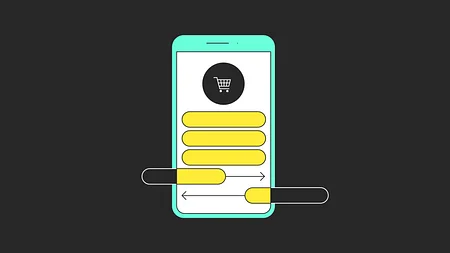Why finbot accessibility will make you the next industry disruptor

Finbots are financial chatbots that, at the lowest level, can answer customer questions and perform basic tasks such as providing account balances or updating personal information.
This article was written by Jilly Li - an Eleven intern who recently spent an action-packed six weeks in the Consulting and Research team. Alongside conducting customer research, identifying market opportunities and learning all about the business, she also wrote this awesome article. If you’re passionate about changing the fabric of financial services, check out our careers page.
There is a growing emphasis on developing sociable and emotionally-intelligent finbots to encourage brand loyalty and attract new customers. However, accessibility remains an afterthought despite a rich history of inventions aimed at helping people with disabilities. The telephone was developed for people with hearing impairments and the typewriter for those going blind.
It is a proven fact that disability-focused inventions foster new innovations. Financial services companies need to focus on accessibility to keep pace in the modern market.
It is a proven fact that disability-focused inventions foster new innovations.
Is a more sociable chatbot the answer to greater adoption rate?
According to a large body of research, chatbots with the ability to simulate human-to-human social behaviours receive more positive responses from users. Whether the same holds true for finbots has not been studied.
In fact, according to a 2017 SAP research study, 66% of participants believe the biggest challenge for chatbots is to improve how they imitate human behaviour. Fintechs like Cleo allow users to link their bank accounts to its AI-powered finbot which serves as a personal financial assistant and advises users with more complex banking procedures, such as setting up budgets.
So how are traditional banks smartening their act with finbots? Both Bank of America and Capital One have hired from the creative industries to bring their finbots Erica and Eno to life, respectively. Erica uses AI and predictive analytics to provide personalised savings advice to users based on their previous spending habits. Former Head of Digital Banking Michelle Moore said that it aims to bring personal service and advice, traditionally reserved for high-net-worth individuals, to everyone.
Are smarter finbots really more inclusive and accessible to everyone?
Whilst almost one in five working age adults (and two in five pension age adults) has a disability, none of the five major UK banks made it to the top three list of best banks for disabled customers. Research also shows that 41% of disabled people suffered during the pandemic due to branch closures.
Most banks in the UK, including HSBC, RBS, Lloyds and Santander, offer a web-based or in-app menu-based chatbot designed to solve users' everyday banking queries. These chatbots work like an automated phone menu that requires the user to make several selections before reaching the info they need.
Designers are continuously improving accessibility in banking apps, but consideration of consumers with health conditions or impairments doesn’t often take centre stage. The only exception to this is the latest NatWest Mobile app - developed jointly with the Royal National Institute of Blind People. Through this partnership, NatWest ensured blind and partially sighted people have access to the same app as their sighted counterparts.
consideration of consumers with health conditions or impairments doesn’t often take centre stage.
However, this should not be the only goal, as for people who are physically disabled or dyslexic or otherwise, a voice-assisted finbot could improve their everyday banking experience. Also, personal health information can inform finbots how best to share information with users and allow them to respond in their own time.
Why should you invest in finbot accessibility?
In striving for brand loyalty and inclusiveness, FS companies need to look at accessibility differently to get ahead of their rivals. Rather than aiming to provide the same chat interaction for disabled people as their enabled counterparts, designers need to pay more attention to finbots’ untapped potential - providing an alternative model to traditional human-to-human financial interaction.
Instead of creating more digital inequality by avoiding accessibility, let's learn from history that designing for people with disability sparks innovation and benefits society as a whole. In other words - before we make finbots more sociable, let's look at designing for accessibility as a creative challenge. It might just lead to the next big thing.


